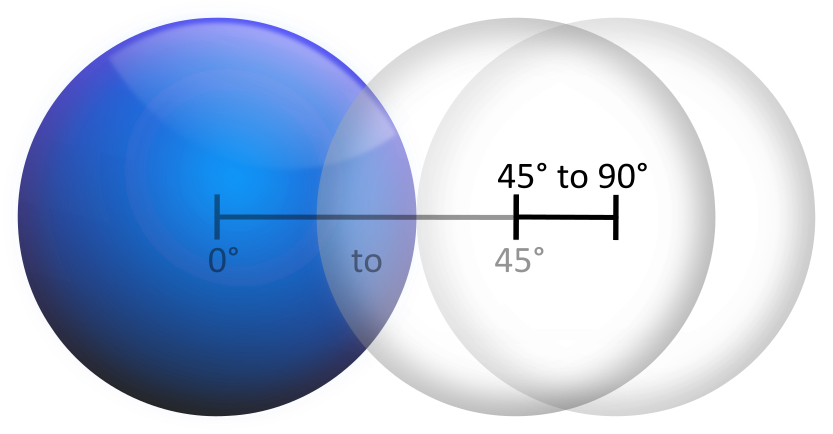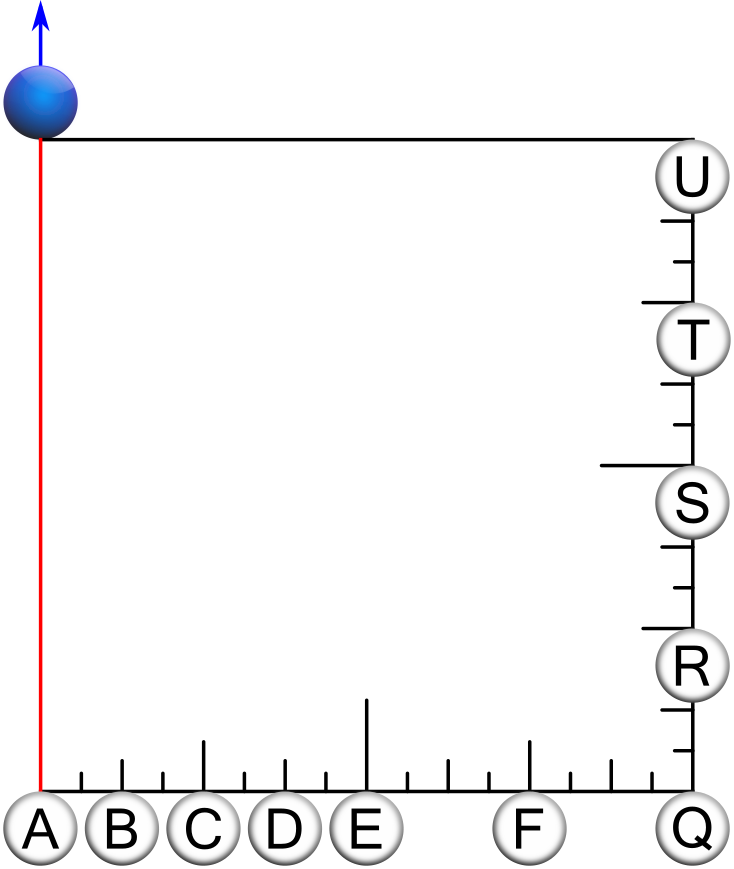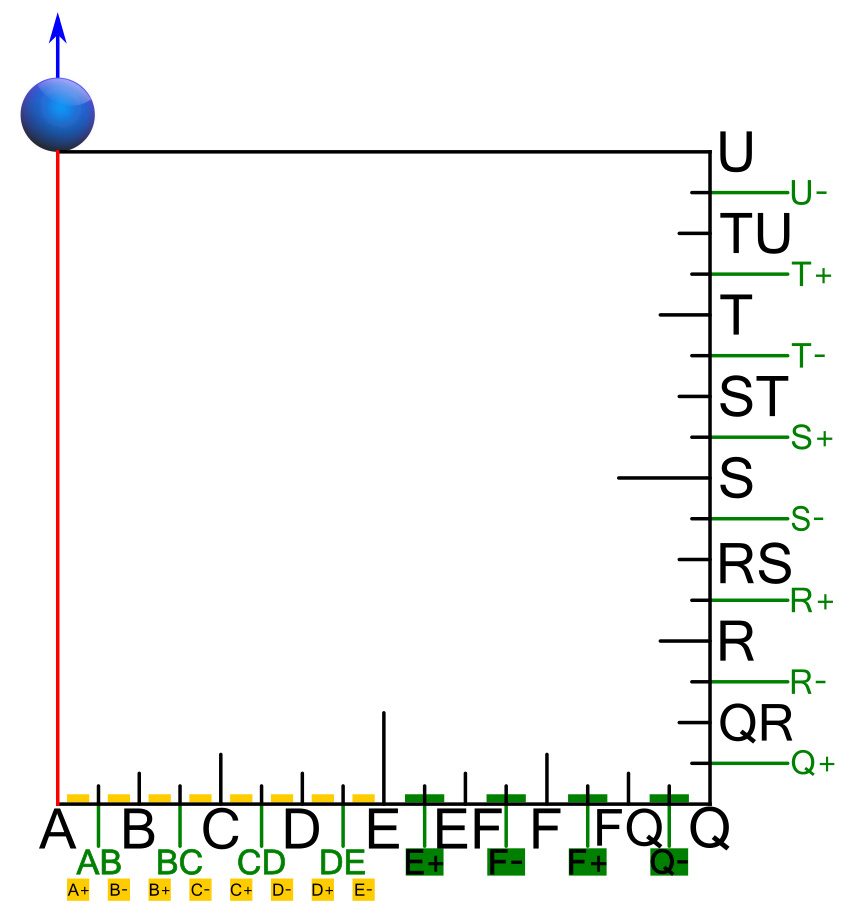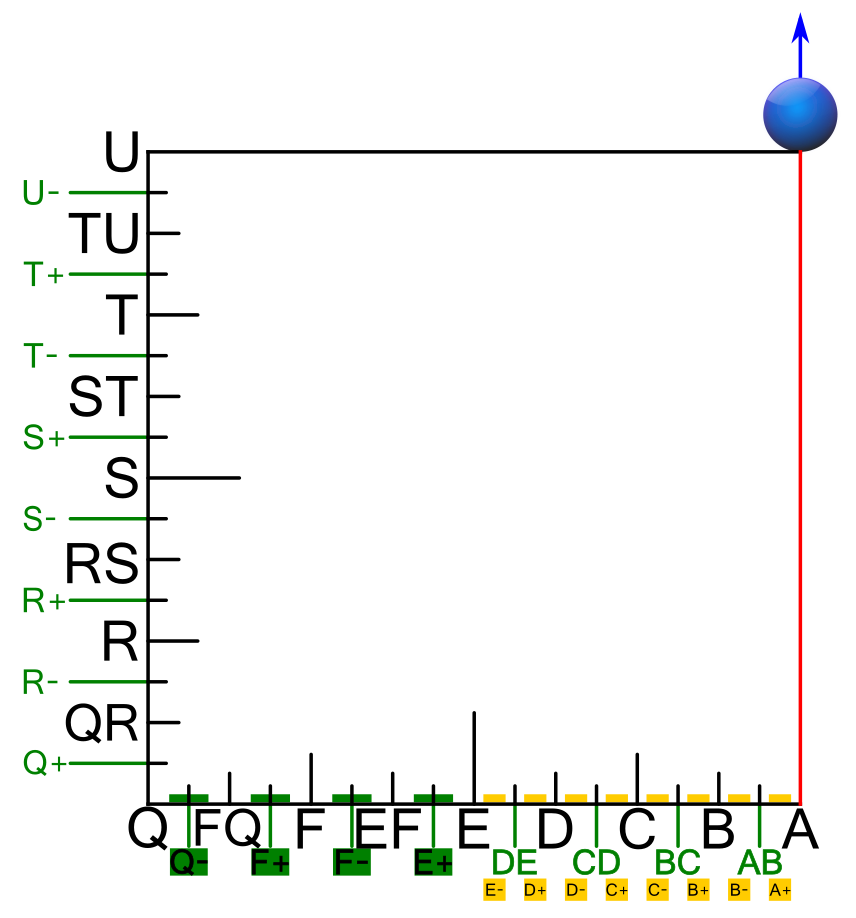Shots Over 45°
Precision becomes more and more important as shot angle measurement increases. This is because as the shot angle increases, aiming adjustments become smaller and smaller to cover the same range of angles. Being just a hair off in our aim, alignment or stroke could easily cause misses when playing the thinner cut shots. The chance of missing the pocket becomes greater and greater. This is a very good reason to practice improving cue ball control so that most shots we face are well below 45°.
Even though steep cuts are more difficult, we must learn to play all shots. This is why the Angle Detective system also includes reference shots and aims for angles above 45°.
If you recall, there were two ways to draw The Master Square. For shot angles 45° and above, we use the second method. Unlike shots below 45° where the cue ball’s contact point lies on the bottom side of The Master Square, for all shots above 45° the cue ball’s contact point lies on the far side of The Master Square.
Dividing the far side into eighths, we find the remaining eight reference rectangles, angles and aims. Although the far-side references cover the same total angle range as the bottom side references (90°-45°=45° and 45°-0°=45°), the aims for the far-side references must all squeeze into a space 1/3 as small.
This vividly reveals the precision mentioned above that is required for successfully playing the thin cut angles. In the Application section, the helpful alternative of aiming the edge of the cue ball for steep cuts rather than aiming the cue ball’s center will be covered.
Far Side References for Shots 45° or Over
Label
Q
QR
R
RS
S
ST
T
TU
U
Angle
45°
49°
53°
58°
63°
69°
76°
83°
90°
Aim
2/8 or 1/4 (‘Q’ for “Quarter”)
(7/32 or Theoretical 1/4)
(3/16)
1/8
(3/32)
(1/16)
(1/32)
(1/128)
1/∞ (‘U’ for “Unmakeable”)
Label
Q
QR
R
RS
S
ST
T
TU
U
Angle
45°
49°
53°
58°
63°
69°
76°
83°
90°
Aim
2/8 or 1/4
(7/32)
(3/16)
1/8
(3/32)
(1/16)
(1/32)
(1/128)
1/∞ (‘U’ for “Unmakeable”)
Notice that the gaps between far-side references range from 4° near Q up to 7° near U. Although it would be nice to shrink the gaps with more references, there simply isn’t enough aiming space to work with, so to be practical we will leave the far-side references at a total of eight.
Adding the far-side references to the near-side, we complete our list with 21 reference shots, angles, and aims:
Label
A
AB
B
BC
C
CD
D
DE
E
EF
F
FQ
Q
QR
R
RS
S
ST
T
TU
U
Angle
0°
3.6°
7°
10°
14°
17°
21°
24°
27°
32°
37°
41°
45°
49°
53°
58°
63°
69°
76°
83°
90°
Aim
8/8 or Full Ball
(15/16)
7/8
(13/16)
6/8 or 3/4
(11/16)
5/8
(9/16)
4/8 or 1/2 (‘E’ for “Edge”)
(7/16)
3/8
(5/16)
2/8 or 1/4 (‘Q’ for “Quarter”)
(7/32 or Theoretical 1/4)
(3/16)
1/8
(3/32)
(1/16)
(1/32)
(1/128)
1/∞ (‘U’ for “Unmakeable”)
Label
A
AB
B
BC
C
CD
D
DE
E
EF
F
FQ
Q
QR
R
RS
S
ST
T
TU
U
Angle
0°
3.6°
7°
10°
14°
17°
21°
24°
27°
32°
37°
41°
45°
49°
53°
58°
63°
69°
76°
83°
90°
Aim
8/8 or Full
(15/16)
7/8
(13/16)
6/8 or 3/4
(11/16)
5/8
(9/16)
4/8 or 1/2
(7/16)
3/8
(5/16)
2/8 or 1/4
(7/32)
(3/16)
1/8
(3/32)
(1/16)
(1/32)
(1/128)
1/∞
All Single-Letter References for Cut Shots to the Right

All Single-Letter References for Cut Shots to the Left

All Labels for All Cut Shots to the Right

All Labels for All Cut Shots to the Left

Now that you understand the geometry, it is time to learn the many ways to apply it.

